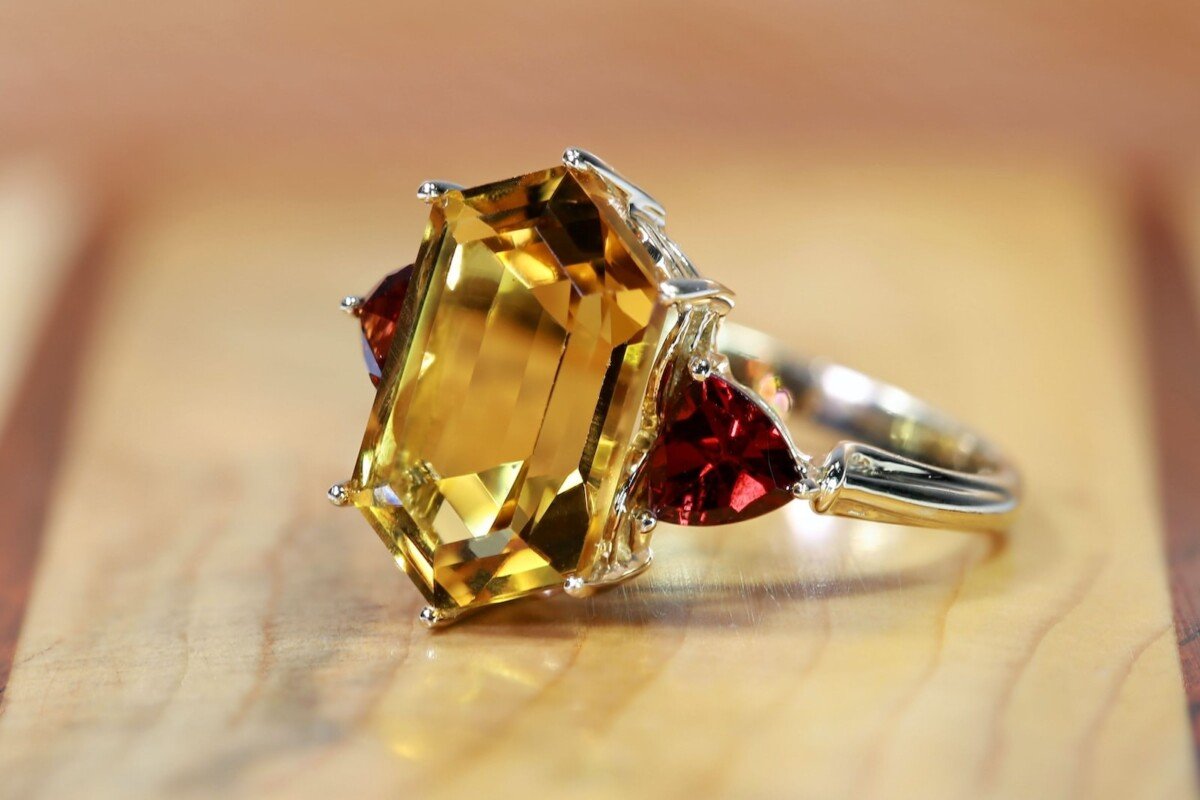Garnet, January’s birthstone, has been revered for centuries for its striking beauty and rich cultural significance. This gem is steeped in folklore and has been associated with karma, good health, and life itself in ancient civilizations. Whether you’re a fan of ancient history or simply appreciate the stunning beauty of garnets, this article will take you on a journey through time and help you uncover the beauty and significance of this precious stone.

Ancient Symbol of Life
The ancient Egyptians believed that garnets symbolized life and used them to honor their goddess of war and protectress of healing, Sekhmet. Egyptian jewelry adorned with these gems dates back as far as 3100 BC, making garnets one of the oldest gems still in use today.
The Connection with Pomegranates and Distant Love
In ancient Greece, garnets were associated with pomegranates and Persephone, the goddess of grain and vegetation. According to Greek mythology, Persephone was captured by Hades, the god of the underworld, and forced to live with him in hell. However, she eventually grew to love Hades and even married him. To ensure Persephone’s return to the underworld, Hades put pomegranate seeds in her mouth, as he believed she would not be able to resist their delightful taste. This is why many garnet pieces of jewelry from ancient Greece resemble pomegranate seeds. The stone is also associated with lovers and friends separated by distance.

Ancient Symbol of Life
A Gift from God?
In ancient times, the term carbuncle was used to refer to any red stone, including garnet. It was one of the stones believed to have been given to King Solomon by God. Some people believe that the red stone was garnet.
Seal of Protection
In ancient Rome, garnets were used to seal important documents. Signet rings were made with garnets and used to stamp the wax to ensure the document was not read.
The Karma Stone and Stone of Health
Garnet is known as the “Karma Stone” and wearing it while doing kind deeds is believed to bring good fortune to the wearer. It is also known as the “Stone of Health” and was thought to protect warriors in battle and ward off disease. In ancient times, it was even placed in wounds to aid in healing. Ancient Hindu astrologers believed that the gem relinquished guilty feelings and negative emotions, bringing happiness, health, and wealth to those who wore it.
A Source of Courage and Confidence
Garnet is the traditional birthstone for January and is believed to inspire courage, especially during times of trauma. It is thought to bring confidence, clarity, creativity, and peace to the wearer.
Famous Garnets
Garnets have a rich history and have been a part of many famous pieces of jewelry. The Smithsonian houses the Pyrope Hair Comb, a Victorian-era garnet hair comb from Bohemia (Czech Republic). The American Museum of Natural History houses one of the largest garnets found the Kunz garnet, which weighs almost 10 pounds. The Smithsonian also houses a rare 11.24-carat demantoid garnet, discovered in the 1990s and valued at around thirty-seven thousand dollars.
In conclusion, garnets are not just beautiful stones, but they also carry a rich cultural significance that spans centuries. Whether you’re a history buff or simply appreciate the beauty of gems, January’s birthstone, garnet, is sure
to capture your heart and imagination. Whether you wear it as a symbol of good health and fortune or simply enjoy its stunning beauty, garnets are a treasure to behold. So next time you come across a garnet, take a moment to appreciate its rich history and cultural significance. This precious stone has been revered for centuries and continues to be a source of inspiration and wonder for those who appreciate its beauty.





